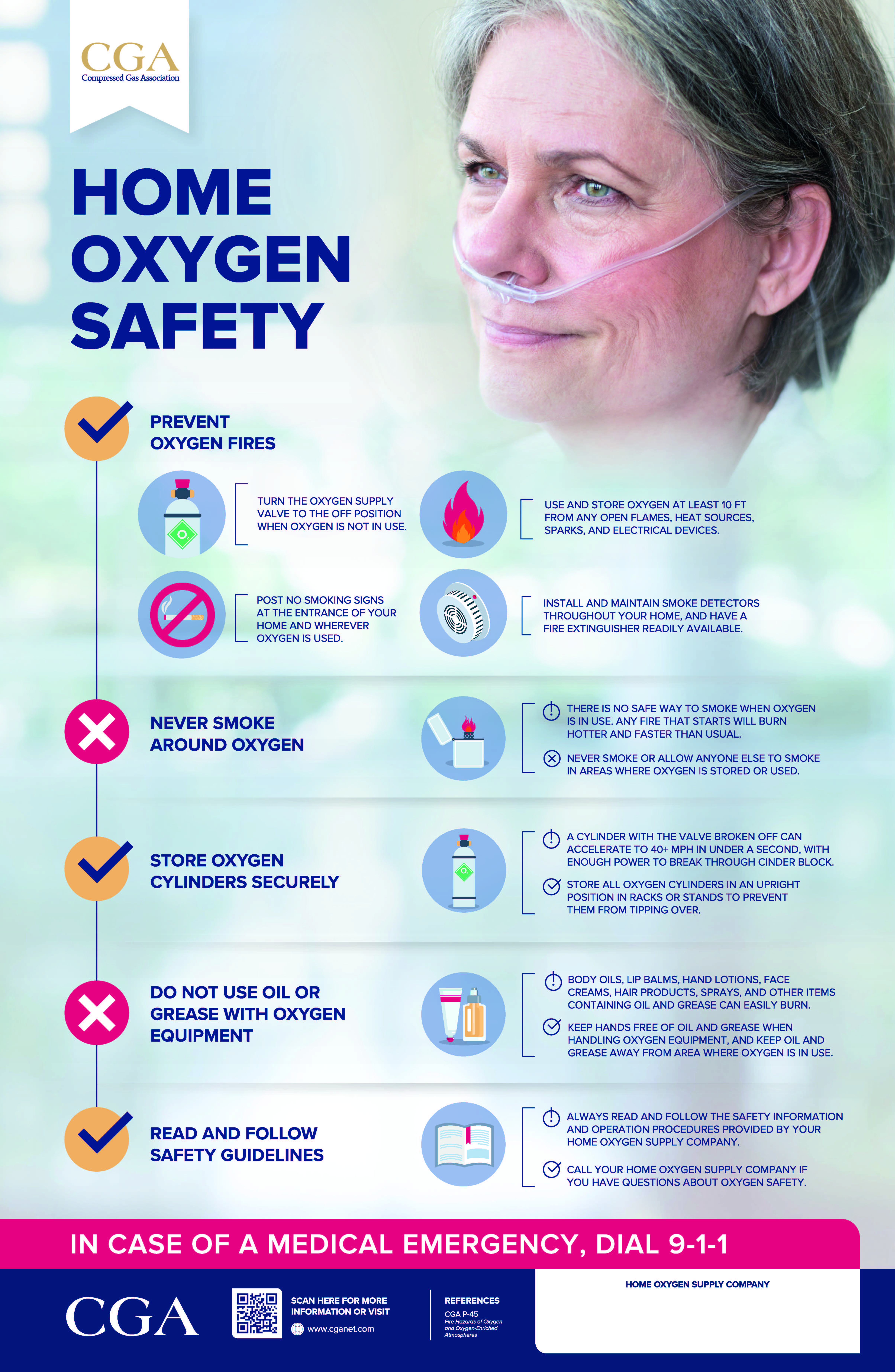Your Home Oxygen Safety Resource Center
Safe Use of Home Oxygen
Home oxygen therapy is prescribed by medical professionals to provide supportive care for patients with a variety of health conditions. You may receive oxygen from a compressed oxygen cylinder, a liquid oxygen tank, a standard oxygen concentrator, or a portable oxygen concentrator.
When using home oxygen therapy, users must read and follow the instructions and safety precautions provided by their home oxygen supplier. While oxygen is nonflammable, it readily supports combustion. As a result, all materials that are flammable in air burn much more vigorously in oxygen; some materials such as lotions, oil, and grease are easily ignited and burn with nearly explosive violence if ignited in oxygen. Smoking and open flames should never be allowed near oxygen. It is extremely important for home oxygen users to take precautions to prevent oxygen fires and use their oxygen equipment safely.
This poster, provided by the Compressed Gas Association, provides basic safety information for home oxygen users. Download your free copy today!
Poster Download
CGA offers home oxygen safety posters as a free safety resource. It is important to note that these posters are not a substitute for reading and following codes and regulations, industry standards, and supplier instructions. Download your free home oxygen safety poster today!
NOTE – Use self-print files for printing at your home or office, and full bleed files for professional printing.
Additional Resources
Product Information: Oxygen
Oxygen is a colorless, odorless, tasteless elemental gas that supports life and combustion constitutes about one-fifth of the atmosphere (20.95% by volume and 23.2% by weight). At temperatures below –297.3 °F (–147.4 °C) and atmospheric pressure, it is a transparent, pale blue liquid that is slightly heavier than water. All elements except the inert gases combine directly with oxygen to form oxides. Oxygen is nonflammable, but it readily supports combustion. All materials that are flammable in air burn much more vigorously in oxygen. Some combustibles, such as oil and grease, are easily ignited and burn with nearly explosive violence in oxygen.


